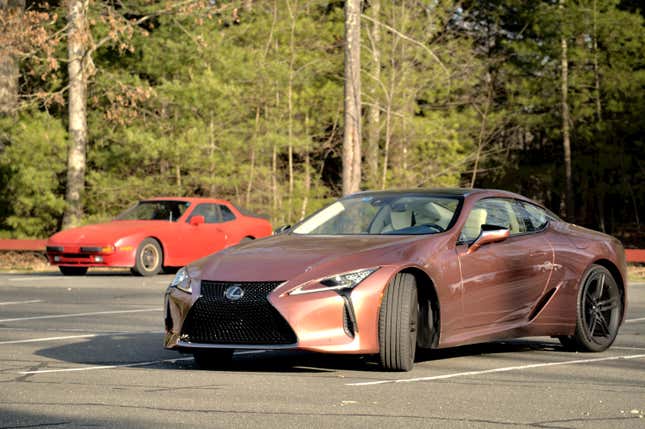Earlier this yr, I spent practically 1,000 miles in a Lexus LC 500 coupe on a street journey to go to my outdated school city. It was a implausible street journey companion, a automobile I may’ve spent days and days in, however there was one thing extra to it than that: Familiarity. In some way, this $111,550 automobile — one thing I may by no means afford to take a look at outdoors of a mortgage or press occasion — felt like a outdated good friend.
After a number of hundred miles or so, I discovered how precisely that labored. It wasn’t that Lexus engineered the LC 500 to instantly really feel like residence, the way in which the Acura Integra does, however as a substitute that the Lexus’ character harkened again to one thing from my very own previous: The Scion FR-S I owned again after I was day by day driving these Rochester roads. Regardless of all of the consolation, the ability, and the sophistication, the LC 500 preserves a few of its little brother’s sports-car spirit.
Full Disclosure: Lexus loaned me an LC 500 for a thousand-mile street journey, making it the most costly automobile I’ve ever avenue parked in Brooklyn.

The LC 500 is, in nearly each method conceivable, a really totally different automobile to my outdated FR-S. They’re each front-engined, rear-wheel-drive, four-seat coupes designed by Toyota, however that’s about all they share. The Lexus is a high-dollar train in consolation and luxurious, whereas the Scion value me $14,000 out of the again of a central New York seller’s recent trade-in lot. The Lexus has a 471-horsepower V8 engine mated to a laggy automated transmission, whereas the Scion has a implausible handbook gearbox bolted to some kind of small four-cylinder tractor motor. The Lexus comes from Toyota Metropolis, the Scion comes from a Subaru plant in Gunma. They need to not, by all logic, really feel related.
But, in defiance of all identified legal guidelines of aviation sense, they do. The Lexus’ suspension is softer, extra compliant over bumps and extra wallowy in visitors, but when thrown right into a nook it communicates by means of the steering wheel like that stiffer Scion. The LC is larger, heavier, and extra highly effective, but it by no means feels lumbering or constructed just for straight-line pace when put next with the smaller, lighter, slower FR-S.
That’s to not say the 2 automobiles really feel the identical, however that they converse to their driver in the identical language. Like C-3PO speaking to Owen Lars’ moisture vaporators, autos all have their very own little intricacies in how they impart, their very own dialects. From reverse ends of Toyota’s sports activities automobile spectrum, the LC 500 and the FR-S talk in the very same method. Study to get together with one, and the opposite will come to you simply as naturally.
The LC 500 is larger, sooner, smoother, and extra comfy than just a little Scion FR-S, however a blindfolded driver would be capable of inform from behind the wheel that the 2 share familial ties. Their character isn’t simply the results of how they’re designed and assembled, however of a whole bunch of hundreds of little decisions all over the place of their improvement — decisions made, in each circumstances, by Toyota. They’re brothers, with their very own little secret language.


